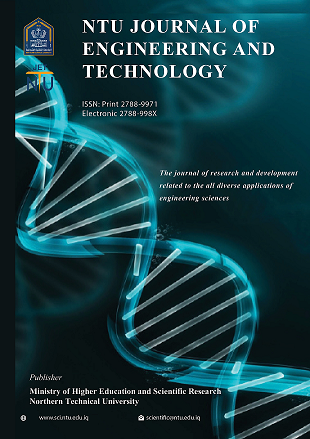Natural convection from a radial heat sink with triangular fins
DOI:
https://doi.org/10.56286/ntujet.v1i2.81Keywords:
Natural convection, triangular fins, radial heat sink, perforated finAbstract
This experimental work summarizes to find the thermal performance of triangular fins in two cases, non-perforated and perforated, and showing the effect of input factors on the thermal performance. Experiments were carried out by testing three fins for the above two cases and the value of heat input rate with three values: 25.69, 63.58, and 136.9 W. A fixed many thermocouples were measure the temperature in the root of the fin and points along its extension and an additional point to measure the ambient temperature. The Rayleigh number and the Nusselt number were calculated. The effect of the Rayleigh number on the Nusselt number was shown. The results showed that the total heat transfer coefficient of the air increases with the increase in heat added in both cases. In addition, it was found that the temperature decrease along the perforated fin is greater than that of the non-perforated fin, and the total Nusselt number increases with the increase in the heat rate input for both cases. The thermal resistance decreases with the increase in Rayleigh number, both perforated and non-perforated. It was also concluded that the non-perforated fins were more efficient in dissipating heat than the perforated fins, and the reason for this is that the heat transfer was under free convection conditions











